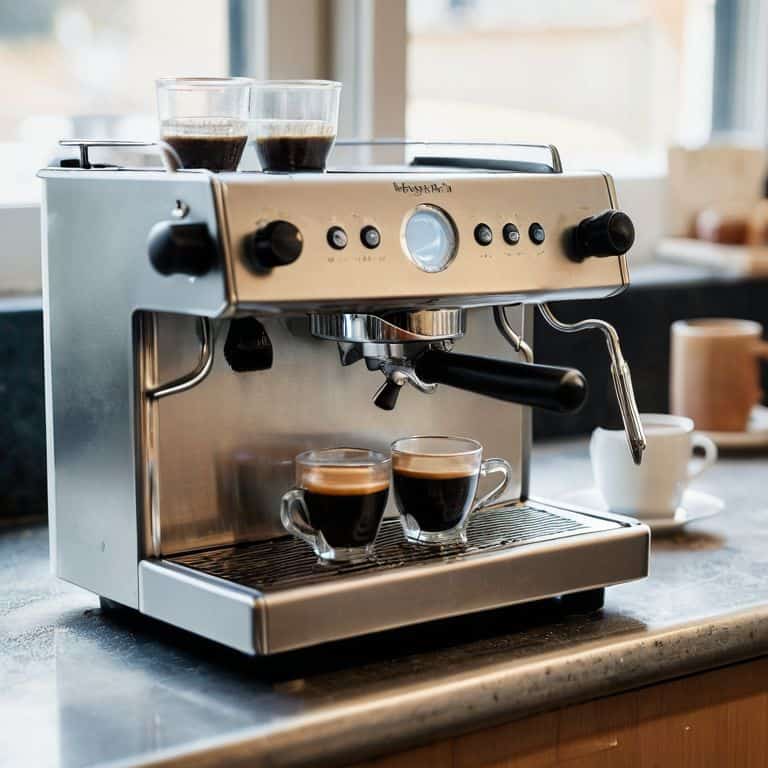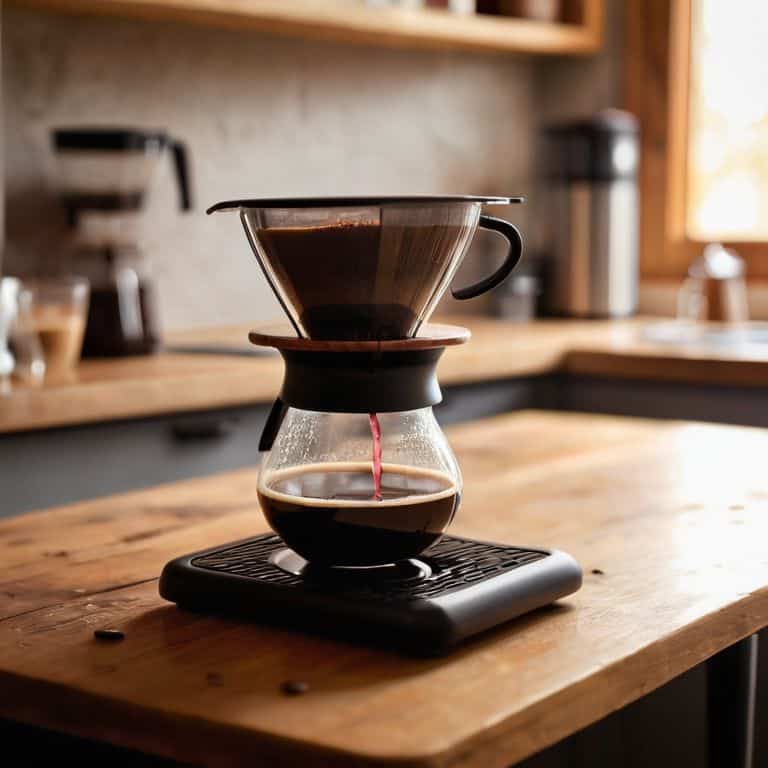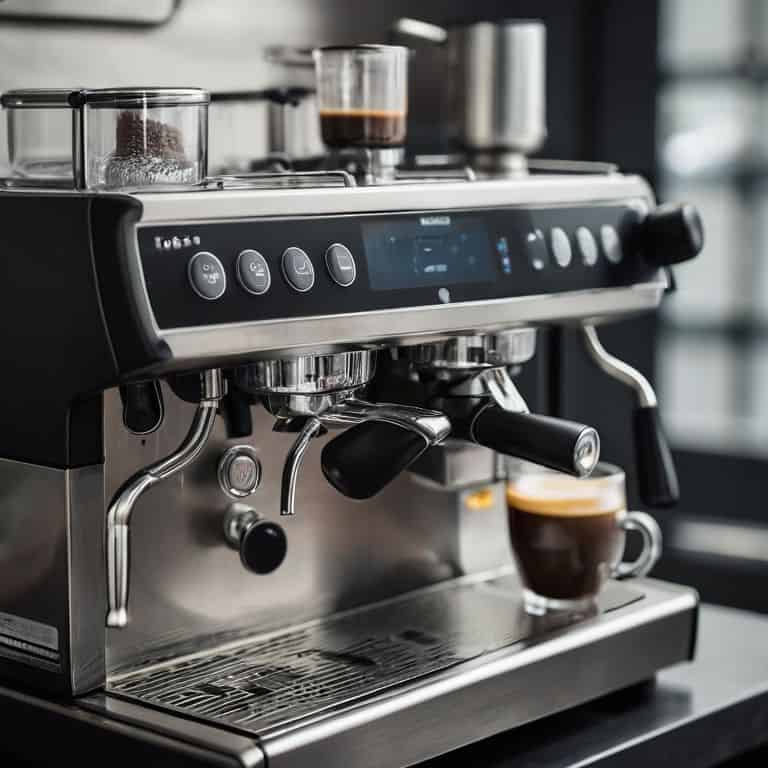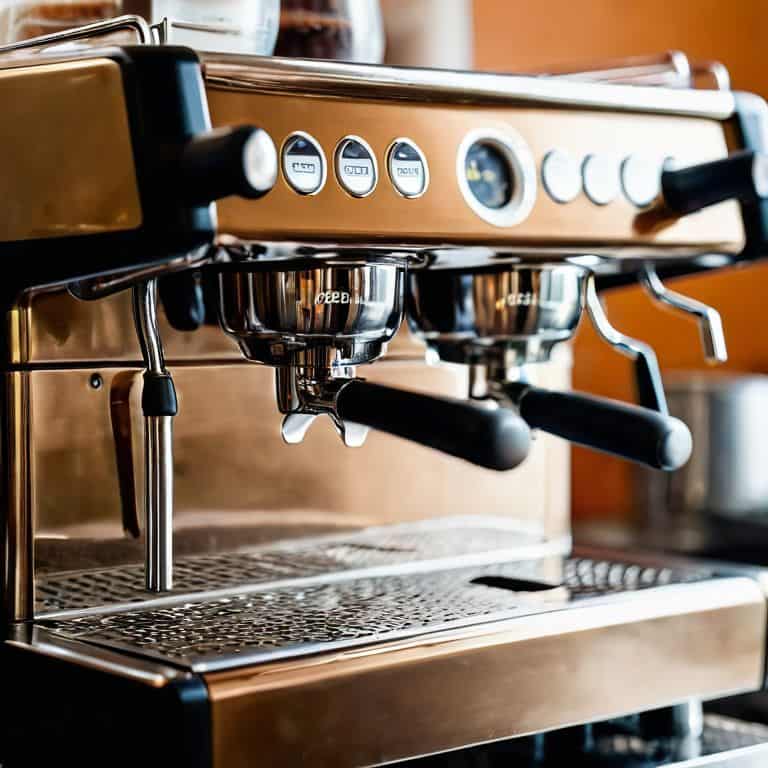I still remember the day I had to repair a high-end espresso machine that had been neglected for months – the grime buildup was staggering, and it was a miracle it still functioned at all. The owner had no idea how often should you clean your espresso machine, and it showed. As a technician, I’ve seen my fair share of dirty machines, but this one took the cake. It got me thinking – what’s the real story behind espresso machine maintenance, and how often should you clean your espresso machine to keep it running smoothly?
In this article, I’ll cut through the noise and give you the honest, no-hype advice you need to keep your espresso machine in top shape. I’ll share my expertise on the importance of regular cleaning, and provide you with a simple, step-by-step guide on how to clean your espresso machine like a pro. You’ll learn how to identify the signs of a dirty machine, and how to prevent common issues like clogged ports and stale coffee flavors. By the end of this article, you’ll be equipped with the knowledge to keep your espresso machine running like new, and brewing perfect shots every time.
Table of Contents
Guide Overview: What You'll Need
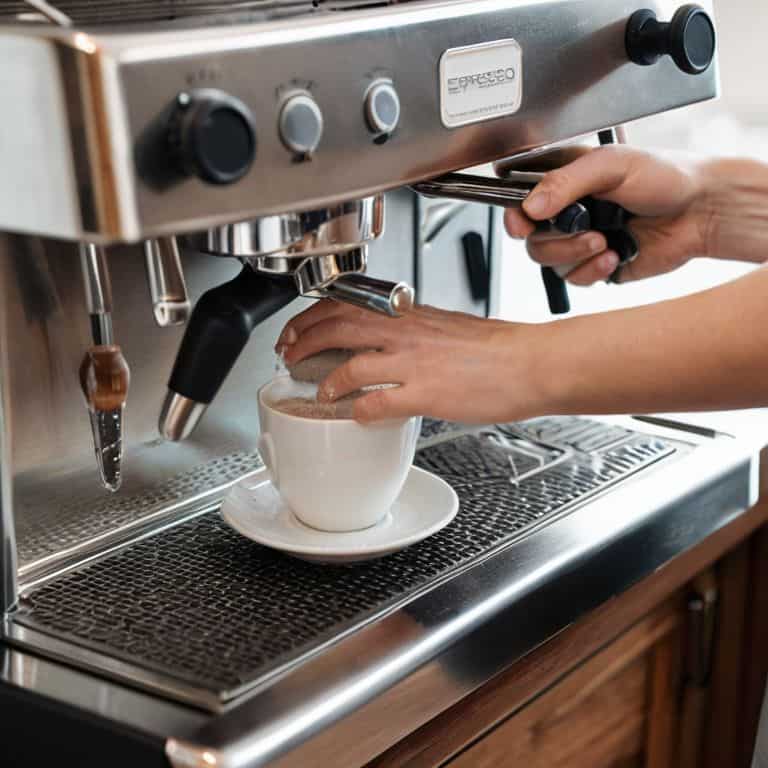
Total Time: 30 minutes to 1 hour
Estimated Cost: $0 – $10
Difficulty Level: Easy
Tools Required
- Soft brush (for cleaning group head and steam wand)
- Damp cloth (for wiping down exterior)
- Descaling solution (optional, depending on water hardness)
Supplies & Materials
- Espresso machine cleaning tablets or powder (if recommended by manufacturer)
- Water (for rinsing and descaling)
- Vinegar (optional, for descaling and cleaning)
- Scale removal product (if you live in an area with hard water)
Step-by-Step Instructions
- 1. First, let’s talk about the daily cleaning routine that’ll keep your espresso machine in top shape. Every day, after you’re done brewing, you should wipe down the machine with a damp cloth, paying special attention to the group head, portafilter, and any other areas that come into contact with coffee. This will help prevent old coffee oils from building up and affecting the taste of your espresso.
- 2. Next, you’ll want to descale your machine every 3-6 months, depending on how often you use it and the water quality in your area. This is a crucial step, as mineral buildup can cause serious damage to your machine’s internal components. I like to use a mixture of water and white vinegar to descale, as it’s gentle on the machine and effective at removing mineral deposits.
- 3. Now, let’s move on to the weekly deep clean. Once a week, you should remove the portafilter and soak it in a mixture of warm water and mild detergent. This will help loosen any tough stains or buildup that’s accumulated over the week. While the portafilter is soaking, you can use a soft brush to clean out the group head and any other areas that are prone to clogging.
- 4. Every month, you should backflush your machine to remove any old coffee oils and residue that may have accumulated in the system. This is a simple process that involves running a cleaning solution through the machine, but it’s essential for maintaining the flavor and quality of your espresso. I like to use a commercial cleaning solution specifically designed for espresso machines, as it’s gentle on the machine and effective at removing buildup.
- 5. In addition to these regular cleaning tasks, you should also inspect your machine’s seals and gaskets every 6-12 months. Over time, these components can wear out and cause leaks, which can lead to serious damage and expensive repairs. By inspecting and replacing these components as needed, you can help ensure that your machine continues to run smoothly and efficiently.
- 6. Another important step in maintaining your espresso machine is to clean the grinder. Yes, you read that right – the grinder is just as important as the machine itself, and it needs regular cleaning to ensure that it’s producing the best possible flavor. I like to use a small brush to clean out the grinder’s burrs and remove any old coffee dust or debris that may have accumulated.
- 7. Finally, every 6-12 months, you should perform a thorough teardown and cleaning of your espresso machine. This involves removing all of the machine’s components and cleaning them individually, as well as inspecting and replacing any worn-out parts. This is a more involved process, but it’s essential for maintaining the machine’s performance and longevity. By following these steps and staying on top of regular maintenance, you can help ensure that your espresso machine continues to produce high-quality espresso for years to come.
Decoding Cleaning Frequency

When it comes to decoding cleaning frequency, it’s essential to consider the type of espresso machine you’re using. For instance, machines with more complex systems may require more frequent cleaning to prevent buildup and maintain optimal performance. I’ve seen cases where neglecting to clean the group heads regularly can lead to a significant decrease in flavor and overall quality of the espresso. Daily cleaning routines can be as simple as wiping down the machine and rinsing the group heads, but it’s crucial to stay on top of it to avoid any issues.
In addition to daily routines, backflushing techniques can be a game-changer for maintaining your espresso machine’s health. This process involves forcing pressurized water through the machine to remove any built-up residue and old coffee oils. By incorporating backflushing into your cleaning schedule, you can ensure your machine is running smoothly and efficiently. It’s also important to note that espresso machine water quality plays a significant role in determining cleaning frequency, as mineral-rich water can lead to more frequent descaling needs.
To take your cleaning game to the next level, consider investing in a reliable cleaning solution that’s specifically designed for your machine. These solutions can help break down tough residue and grime, making the cleaning process much more efficient. By combining a good cleaning solution with a consistent daily routine and regular backflushing, you’ll be well on your way to extending the life of your espresso machine and ensuring it continues to produce high-quality shots for years to come.
Daily Routines for Espresso Machines
As a technician, I’ve seen my fair share of espresso machines that have been neglected, with daily grime and old coffee oils building up. To avoid this, I recommend incorporating a few simple habits into your daily routine. For instance, wipe down the machine after each use, and make it a point to clean the steam wand and group head daily. These small actions can go a long way in preventing the buildup of bacteria and old coffee residue.
I also like to think of daily cleaning as a form of preventive maintenance – it’s not just about keeping your machine clean, but also about ensuring it continues to perform at its best. By making these habits a part of your daily routine, you’ll be able to enjoy better-tasting espresso and extend the lifespan of your machine.
Descaling Secrets Revealed
As I delve into the world of descaling, I’m reminded of the countless machines I’ve restored in my workshop. It’s astonishing how a simple process like descaling can be overlooked, yet it’s crucial for preventing scale buildup. I always advise my clients to descale their machines every 3-6 months, depending on usage and water quality. It’s not just about throwing a descaling solution into the machine, though – it’s about understanding the chemistry behind it.
I’ve seen machines ruined by improper descaling, so it’s essential to follow the manufacturer’s guidelines and use a high-quality descaling solution. In my experience, a mixture of water and citric acid or vinegar works wonders. By descaling regularly, you’ll not only prevent scale buildup but also ensure your machine’s longevity and optimal performance.
The Cleaning Cadence: 5 Tips to Keep Your Espresso Machine Humming
- Clean your espresso machine’s group head and portafilter daily to prevent old coffee oils from building up and affecting the taste of your shots
- Run a mixture of equal parts water and white vinegar through your machine every week to keep the internal components free of mineral deposits and scaling
- Descale your machine every 3-6 months, depending on usage and water hardness, to prevent corrosion and maintain optimal performance
- Perform a deep clean of your machine’s brew chamber and valves every month to remove any built-up residue and debris
- Regularly inspect and clean your machine’s steam wand and frothing pitcher to prevent milk residue from clogging the system and affecting the quality of your microfoam
Key Takeaways for Espresso Machine Maintenance
Cleaning your espresso machine is not just about performance, but also about preventing the buildup of old coffee oils and grime that can lead to costly repairs or even render your machine useless
Decoding the right cleaning frequency for your espresso machine involves understanding its usage, water quality, and the type of coffee you brew, as these factors significantly impact the machine’s longevity and flavor output
A well-maintained espresso machine, with regular descaling and daily routines, can last for decades and produce consistent, high-quality espresso, making the effort you put into its upkeep a worthwhile investment for any coffee enthusiast
The Cleaning Conundrum
A clean espresso machine is not just a matter of hygiene, it’s a matter of respect – for the craft, for the equipment, and for the coffee itself; I always say, clean your machine as often as you use it, because the moment you neglect it is the moment it starts to neglect you.
Simon Adler
A Clean Machine is a Happy Machine

As we’ve explored the world of espresso machine cleaning, it’s become clear that regular maintenance is key to unlocking your machine’s full potential. From decoding cleaning frequency to mastering descaling secrets and daily routines, we’ve covered the essential steps to keep your machine in top shape. By incorporating these habits into your daily routine, you’ll be able to appreciate the nuances of your espresso machine’s performance and enjoy a better cup of coffee. Whether you’re a seasoned barista or a home brew enthusiast, remembering to clean your machine is crucial for its longevity and your satisfaction.
So, the next time you’re tempted to neglect your espresso machine’s cleaning, remember that a clean machine is not just a matter of hygiene, but also a testament to the art of engineering that goes into crafting these complex devices. By embracing the ritual of cleaning and maintenance, you’ll not only extend the life of your machine, but also elevate your coffee game and develop a deeper appreciation for the beautiful mechanics that bring you your daily cup of joy.
Frequently Asked Questions
What are the consequences of not cleaning my espresso machine regularly?
Neglecting to clean your espresso machine can lead to poor taste, clogged brew heads, and even machine failure. I’ve seen it time and time again in my workshop – old coffee oils and mineral deposits wreaking havoc on internal components. Trust me, a little maintenance goes a long way in preventing costly repairs down the line.
How do I know if my espresso machine needs a deep clean versus a quick daily wipe-down?
Listen, if you’re noticing a decline in shot quality or a funky taste, it’s likely time for a deep clean. But if it’s just a matter of daily grime, a quick wipe-down should suffice. Pay attention to the machine’s sound, too – a well-maintained one will hum along smoothly, while a dirty one will start to whine or sputter.
Can I use the same cleaning products on all parts of my espresso machine or are there specific guidelines for different materials?
Ah, great question – when it comes to cleaning products, you can’t just use one size fits all. Different materials require specific care, so I always recommend checking your machine’s manual for guidance. For example, brass and copper parts can be cleaned with mild soap and water, while stainless steel can handle more heavy-duty cleaners, but avoid using those on sensitive electrical components or seals.
